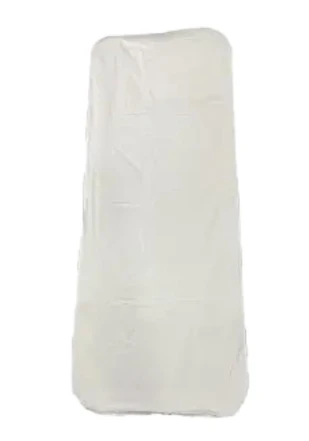డిసెం . 16, 2024 23:13 Back to list
Exploring Top Outdoor Rain Jacket Manufacturers for Quality and Performance
The Outdoor Rain Jacket Manufacturing Industry A Closer Look
In recent years, the outdoor apparel market has witnessed substantial growth, largely driven by increased consumer interest in outdoor activities and the need for functional, weather-resistant clothing. Rain jackets, a staple for outdoor enthusiasts, play a critical role in this sector. As demand surges, the focus on the factories that manufacture these essential garments has intensified. In this article, we will explore the key aspects surrounding outdoor rain jacket factories, including materials, manufacturing processes, sustainability practices, and the global market landscape.
Materials Used in Rain Jacket Production
The foundation of a high-quality rain jacket lies in the materials used during production. Outdoor rain jackets are typically crafted from specialized waterproof and breathable fabrics. The most common materials include Gore-Tex, nylon, polyester, and various synthetic blends. Gore-Tex, for instance, is renowned for its ability to repel water while allowing moisture to escape, ensuring that wearers remain dry and comfortable.
In recent years, manufacturers have also started to explore eco-friendly materials as consumers become more environmentally conscious. Recycled polyester and organic cotton are gaining traction, appealing to a market segment that values sustainability alongside performance.
Manufacturing Processes
The production process for outdoor rain jackets generally involves several stages, including design, material sourcing, cutting, sewing, and finishing. Factories often rely on advanced technology to enhance efficiency and quality. For instance, computerized cutting machines can minimize material waste while ensuring precise cuts, which is crucial for creating fitted garments.
Sewing techniques also play a significant role in the functionality of rain jackets. Factories employ specialized methods such as seam sealing and the use of waterproof zippers to enhance the jacket's performance. Quality control is paramount throughout the manufacturing process; each jacket undergoes rigorous testing to ensure it meets industry standards for waterproofing and breathability.
The Importance of Sustainability
Sustainability has become a central theme in the outdoor apparel industry, and rain jacket factories are no exception. Many manufacturers are implementing practices aimed at reducing their environmental footprint. This includes sourcing sustainable materials, adopting eco-friendly dyes and finishes, and optimizing production processes to minimize waste.
outdoor rainjacket factories

Furthermore, initiatives such as take-back programs allow consumers to return their old jackets for recycling, further promoting a circular economy. These practices not only appeal to eco-conscious consumers but also comply with increasing regulatory pressures on environmental stewardship.
Global Market Landscape
The outdoor rain jacket market is experiencing robust growth on a global scale. North America and Europe are currently the largest markets, driven by a high participation rate in outdoor activities and a growing appreciation for premium outdoor gear. However, regions such as Asia-Pacific are emerging as significant players due to rising disposable incomes and increasing interest in outdoor sports.
As outdoor enthusiasts seek performance-driven products, brands are leveraging technology and innovation to differentiate themselves in an increasingly competitive marketplace. This has led to collaborations among brands, material suppliers, and factories to push the boundaries of functionality and style.
Challenges Facing Rain Jacket Factories
Despite the opportunities, outdoor rain jacket factories also face several challenges. Supply chain disruptions, fluctuating raw material costs, and intense competition from both established and emerging brands can complicate operations. Furthermore, manufacturers must navigate varying regulations regarding labor practices and environmental standards in different regions.
To thrive, factories must remain agile, adapting to market trends while prioritizing quality and sustainability. Embracing automation and digital solutions can enhance efficiency and responsiveness, helping factories meet consumer demands more effectively.
Conclusion
The outdoor rain jacket manufacturing industry is at a fascinating intersection of innovation, sustainability, and consumer demand. As the appetite for outdoor activities continues to grow, so too does the need for high-quality, functional rain jackets. By leveraging advanced materials, sustainable practices, and efficient manufacturing processes, factories have the opportunity to not only meet consumer needs but also contribute positively to the planet. The future of outdoor rain jackets lies in the hands of those who can balance performance with responsibility, paving the way for a more sustainable and adventurous world.
-
100% Waterproof PVC/PEVA Kids Poncho | Hoodie Rain Wear
NewsAug.21,2025
-
PVC/PEVA Sleeves: Durable Protection for Workshop & Labour Safety
NewsAug.19,2025
-
Waterproof Kid Apron with Sleeves: PEVA/PVC for Painting Fun!
NewsAug.18,2025
-
36x90" Double Zipper Post Mortem Bag - Secure & Reliable
NewsAug.17,2025
-
Waterproof PVC/Vinyl Work Apron - Heavy-Duty Protection
NewsAug.16,2025
-
Heavy Duty Post Mortem Bag - 36x90, Double Zipper
NewsAug.15,2025





